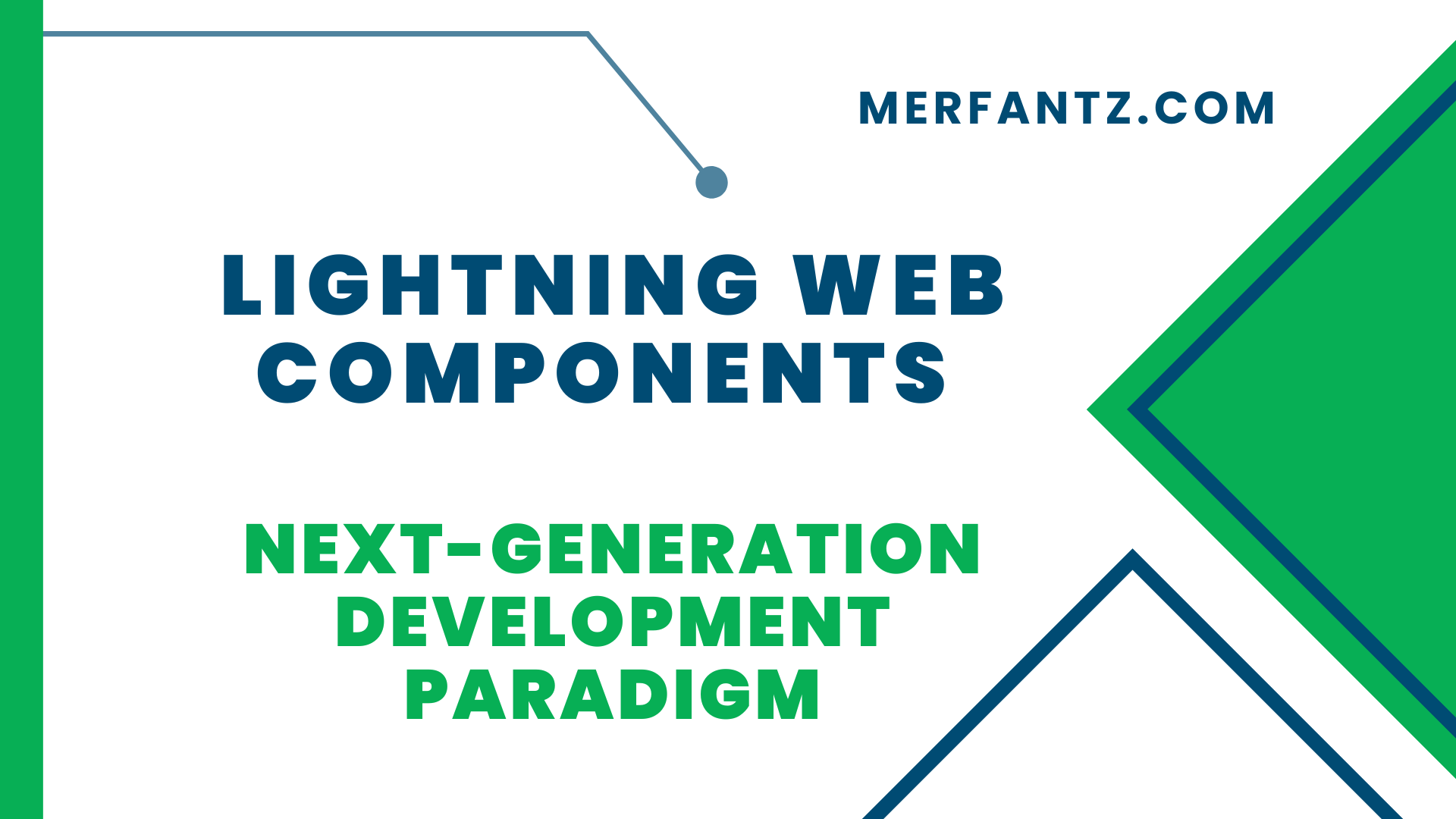Overview of Lightning Web Components
Lightning Web Components (LWC) is a revolutionary development framework offered by Salesforce that enables developers to build responsive and lightning-fast web applications. It is a modern, standards-based programming model that leverages web standards like HTML, CSS, and JavaScript. With LWC, developers can create reusable and modular components that seamlessly integrate with the Salesforce ecosystem. These components offer enhanced performance, scalability, and maintainability, making them the preferred choice for building cutting-edge applications.
LWC follows a component-based architecture, allowing developers to encapsulate their code and create self-contained units of functionality. This approach promotes reusability, reduces code complexity, and facilitates collaboration among development teams. Lightning Web Components also provide a rich set of features and tools, including event-driven communication, data binding, and access to the Salesforce Lightning Design System (SLDS), ensuring consistent and visually appealing user interfaces across applications. By harnessing the power of Lightning Web Components, developers can unlock new levels of productivity and deliver seamless user experiences in their Salesforce applications.
Benefits of Lightning Web Components in Development
The adoption of Lightning Web Components brings several benefits to the development process. First and foremost, LWC offers improved performance due to its lightweight nature and optimized rendering engine. This results in faster load times, smoother interactions, and an overall enhanced user experience. Additionally, Lightning Web Components promote code reusability, enabling developers to build modular and maintainable applications. With reusable components, development teams can save time and effort by leveraging existing code rather than reinventing the wheel for every feature or functionality.
Another significant advantage of Lightning Web Components is their seamless integration with the Salesforce platform. LWC provides tight integration with Salesforce APIs, allowing developers to easily access and manipulate data stored in Salesforce. This integration enables developers to leverage the rich ecosystem of Salesforce services, such as data storage, security, and authentication, while building their applications. Moreover, Lightning Web Components are highly customizable, empowering developers to create personalized and tailored user experiences that align with their business requirements. The flexibility and extensibility offered by LWC make it an ideal choice for developing complex enterprise applications.
Getting Started with Lightning Web Components
To start building applications with Lightning Web Components, developers need to set up their development environment. Salesforce provides a comprehensive set of tools and resources to assist developers in this process. Firstly, developers need to enable the Lightning Web Components feature in their Salesforce org. This can be done through the Salesforce Setup menu by navigating to the “Feature Settings” section and selecting “Lightning Web Components.” Once enabled, developers can start creating Lightning Web Components using their preferred code editor.
Developers can utilize the Salesforce CLI (Command Line Interface) to create, manage, and deploy Lightning Web Components. The Salesforce CLI provides a range of commands and utilities for developing and testing LWC. Additionally, Salesforce offers a web-based tool called “LWC Playground” that allows developers to experiment with Lightning Web Components in a browser-based environment without the need for local setup. By leveraging these resources, developers can quickly get started with Lightning Web Components and embark on their journey of building powerful applications.
Best Practices for Lightning Web Component Development
When developing Lightning Web Components, it is essential to follow best practices to ensure efficient and maintainable code. First, it is recommended to adhere to the Single Responsibility Principle, where each component focuses on a specific functionality or task. This promotes reusability and makes the code easier to understand and maintain. Secondly, developers should leverage the power of the Lightning Data Service, which provides a declarative way to handle data retrieval and manipulation, reducing the amount of custom code required.
Another best practice is to utilize the event-driven architecture offered by Lightning Web Components. By using events, components can communicate with each other, enabling loose coupling and enhancing code modularity. Additionally, developers should strive for code consistency and readability by following naming conventions, using descriptive comments, and organizing the code in a logical manner. Regular testing and debugging are also crucial to identify and fix issues early in the development process.
Integrating Lightning Web Components with Salesforce
One of the key advantages of Lightning Web Components is their seamless integration with the Salesforce platform. Developers can leverage the power of Salesforce data and services within their components. This integration is achieved through the use of Apex controllers and Lightning Data Service. Apex controllers enable developers to retrieve and manipulate data from Salesforce backend systems, while Lightning Data Service provides a declarative way to handle data operations, including CRUD operations and record caching.
Furthermore, Lightning Web Components can be easily embedded within Salesforce Lightning Pages and App Builder, allowing developers to create customized user interfaces. Components can be added and configured using a drag-and-drop interface, providing a visual and intuitive way to build Salesforce applications. By integrating Lightning Web Components with Salesforce, developers can leverage the platform’s robust features and services, enabling them to build powerful and enterprise-grade applications.
Enhancing User Experience with Lightning Web Components
Lightning Web Components offer numerous features that contribute to an enhanced user experience. With LWC, developers can leverage the Salesforce Lightning Design System (SLDS) to create visually appealing and consistent user interfaces. SLDS provides a comprehensive set of design guidelines, CSS frameworks, and pre-built components that ensure a seamless user experience across different devices and screen sizes.
Additionally, Lightning Web Components enable developers to build responsive and interactive user interfaces. By utilizing JavaScript and CSS, developers can create dynamic and engaging components that respond to user actions in real-time. LWC also supports client-side caching, which improves performance by reducing the need for repeated server requests. With these capabilities, developers can deliver rich and intuitive user experiences that enhance user engagement and satisfaction.
Optimizing Performance in Lightning Web Components
Optimizing the performance of Lightning Web Components is crucial for delivering fast and responsive applications. One optimization technique is to minimize the number of server round trips by utilizing client-side caching and efficient data retrieval. Lightning Data Service provides a caching mechanism that allows components to store and retrieve data locally, reducing the need for frequent server requests. Additionally, developers can implement lazy loading techniques to load data and resources only when needed, improving initial page load times.
Another performance optimization strategy is to optimize the rendering and rendering cycles of components. Developers should aim to minimize the number of DOM manipulations and utilize efficient rendering techniques such as conditional rendering and virtual DOM diffing. Additionally, optimizing the use of JavaScript and CSS, including reducing unnecessary code and leveraging minification and compression techniques, can significantly improve the overall performance of Lightning Web Components.
Testing and Debugging Lightning Web Components
Testing and debugging are critical aspects of Lightning Web Component development to ensure code quality and identify potential issues. Salesforce provides various tools and frameworks to assist developers in these processes. Developers can utilize the Lightning Testing Service (LTS) to write unit tests for their components, validating the behavior and functionality of the code. Additionally, the Salesforce CLI offers debugging capabilities, allowing developers to inspect and debug their components in real-time.
Furthermore, developers can leverage browser developer tools to debug and analyze the performance of Lightning Web Components. These tools enable developers to inspect the DOM, monitor network requests, and profile the JavaScript code to identify potential bottlenecks and optimize the performance. By incorporating comprehensive testing and effective debugging practices, developers can ensure the reliability and stability of their Lightning Web Components.
Extending Lightning Web Components with Aura Components
Aura Components are another type of component framework offered by Salesforce, coexisting with Lightning Web Components. While Lightning Web Components provide a modern and standards-based approach, Aura Components offer a legacy framework that provides additional functionality and compatibility with older Salesforce implementations. Developers can extend Lightning Web Components with Aura Components to leverage the capabilities and features provided by the Aura framework, allowing seamless integration and coexistence of both component types.
By extending Lightning Web Components with Aura Components, developers can utilize existing Aura-based components and leverage their functionality within the Lightning Web Component context. This approach ensures compatibility with legacy code and systems while taking advantage of the modern development paradigm offered by Lightning Web Components. Salesforce provides extensive documentation and resources to guide developers in integrating and extending Lightning Web Components with Aura Components.
Future Trends and Innovations in Lightning Web Component Development
As Lightning Web Components continue to evolve, several future trends and innovations are shaping the development landscape. One emerging trend is the increasing adoption of serverless computing and Functions-as-a-Service (FaaS). Developers can leverage serverless platforms such as Salesforce Functions to build and deploy lightweight, event-driven functions that can be invoked by Lightning Web Components, enhancing scalability and reducing infrastructure complexity.
Another area of innovation is the integration of artificial intelligence (AI) and machine learning (ML) capabilities with Lightning Web Components. Salesforce’s Einstein AI platform offers pre-built ML models and services that can be seamlessly integrated into Lightning Web Components. This enables developers to enhance their applications with intelligent features, such as predictive analytics, natural language processing, and image recognition. By incorporating AI and ML, Lightning Web Components can deliver more personalized and intelligent user experiences.
FAQ:
Can Lightning Web Components be used outside of Salesforce?
Lightning Web Components are primarily designed for use within the Salesforce platform. However, with the introduction of Lightning Web Components Open Source, developers can now leverage the power of LWC in non-Salesforce projects as well.
Are Lightning Web Components backward compatible with existing Aura Components?
Lightning Web Components and Aura Components coexist and can be integrated with each other. Developers can extend Lightning Web Components with Aura Components to utilize legacy code and systems, ensuring compatibility and smooth transition.
What is the programming model of Lightning Web Components?
The programming model of Lightning Web Components is based on a modern, standards-based approach that utilizes web standards like HTML, CSS, and JavaScript.
Which architecture is used in Lightning component development?
Lightning component development follows a component-based architecture.
What is the architecture of Lightning Web Components based on?
The architecture of Lightning Web Components is based on the Web Components standard.
What are the components in the Lightning Component framework?
The Lightning Component framework consists of Aura Components, which are the building blocks for creating Lightning-based applications.
Conclusion:
Lightning Web Components represent the future of web application development, providing a modern, modular, and high-performance framework. With their seamless integration with the Salesforce platform and a range of powerful features, developers can deliver exceptional user experiences and drive innovation in their applications. By following best practices, optimizing performance, and leveraging integration capabilities, Lightning Web Components empower developers to build robust and scalable applications that meet the evolving needs of businesses. Merfantz Technologies is committed to harnessing the potential of Lightning Web Components and delivering cutting-edge solutions to our clients.
Author Bio
Co-Founder & CMO at Merfantz Technologies Pvt Ltd | Marketing Manager for FieldAx Field Service Software | Salesforce All-Star Ranger and Community Contributor | Salesforce Content Creation for Knowledge Sharing






